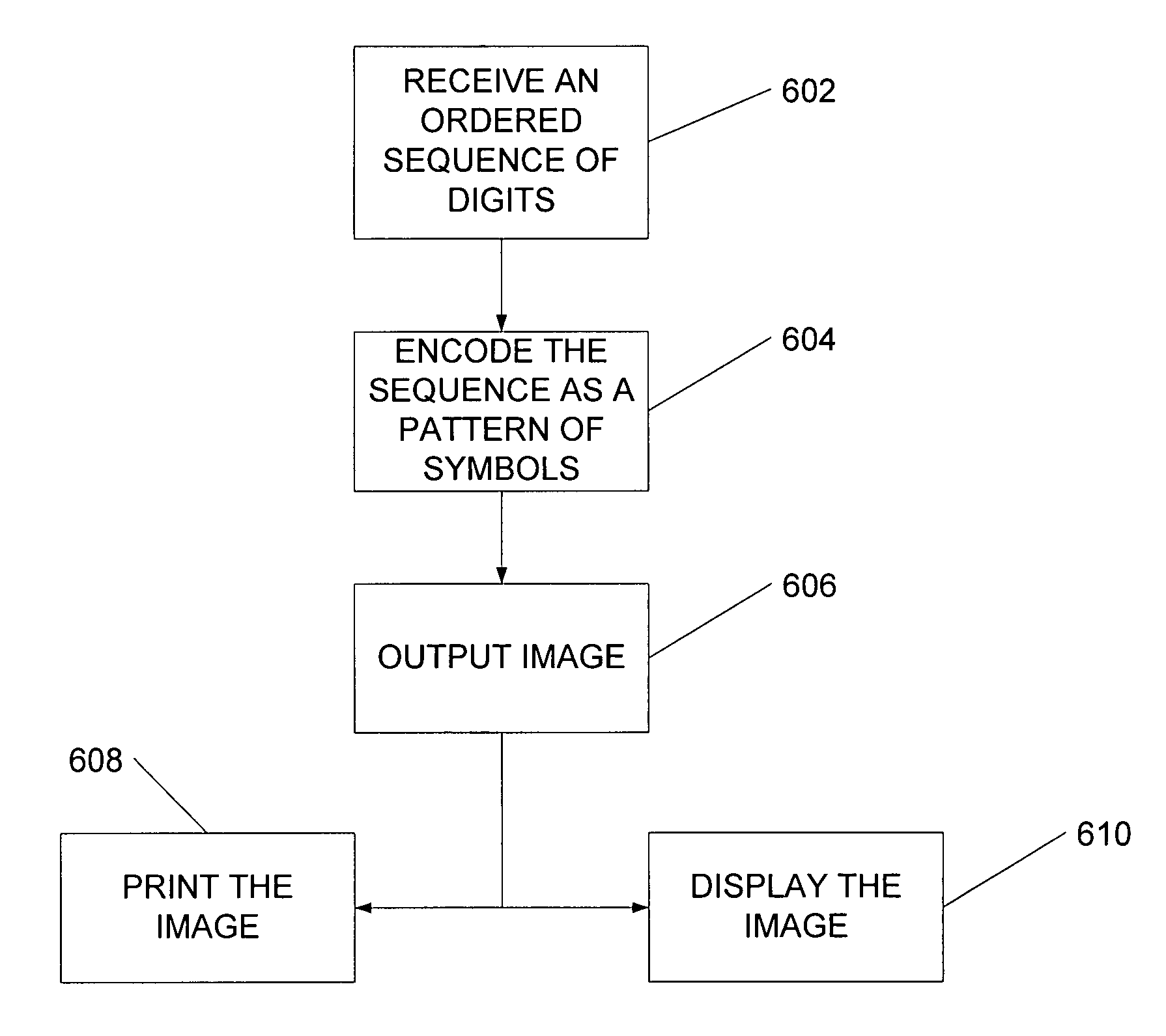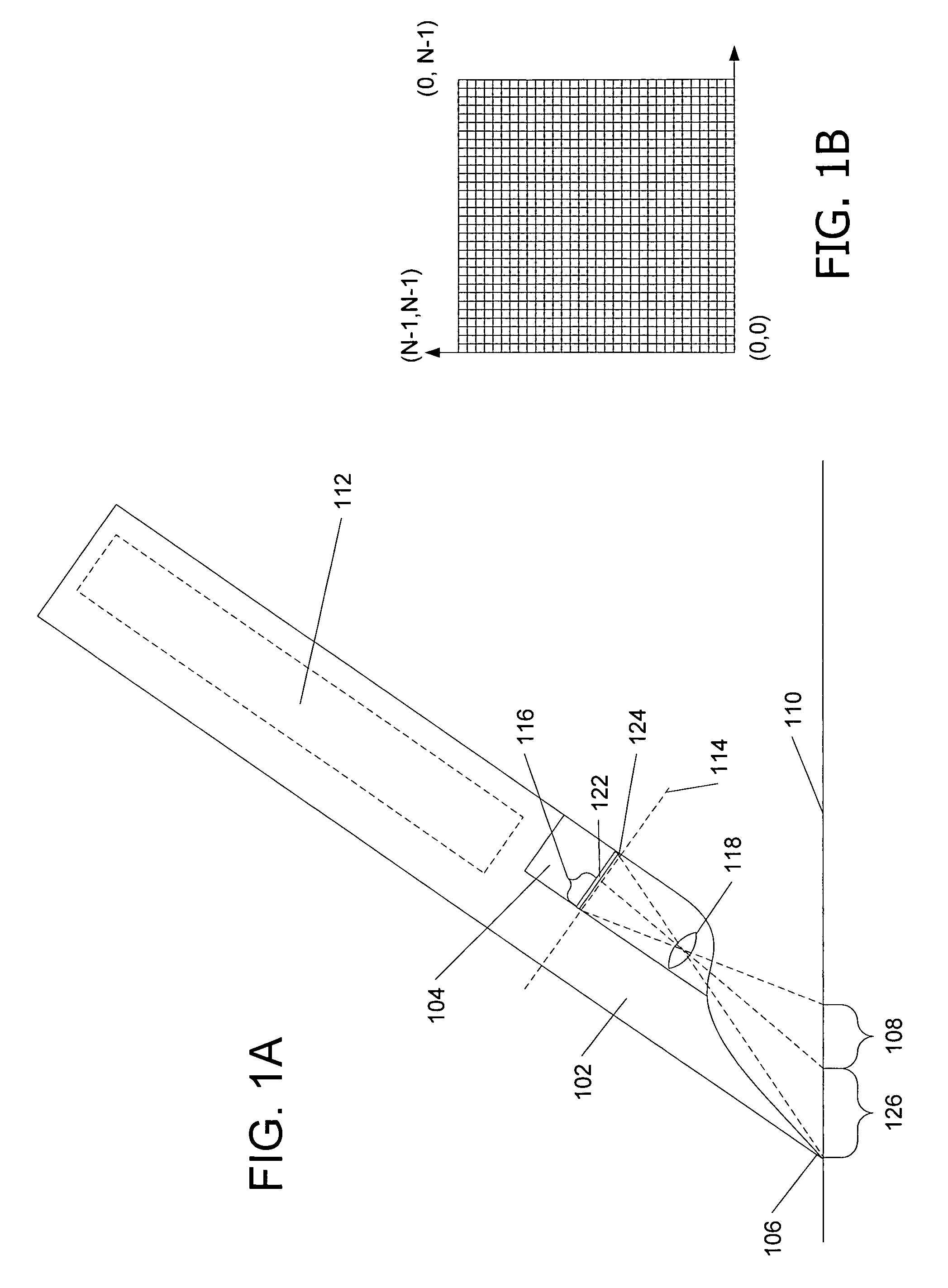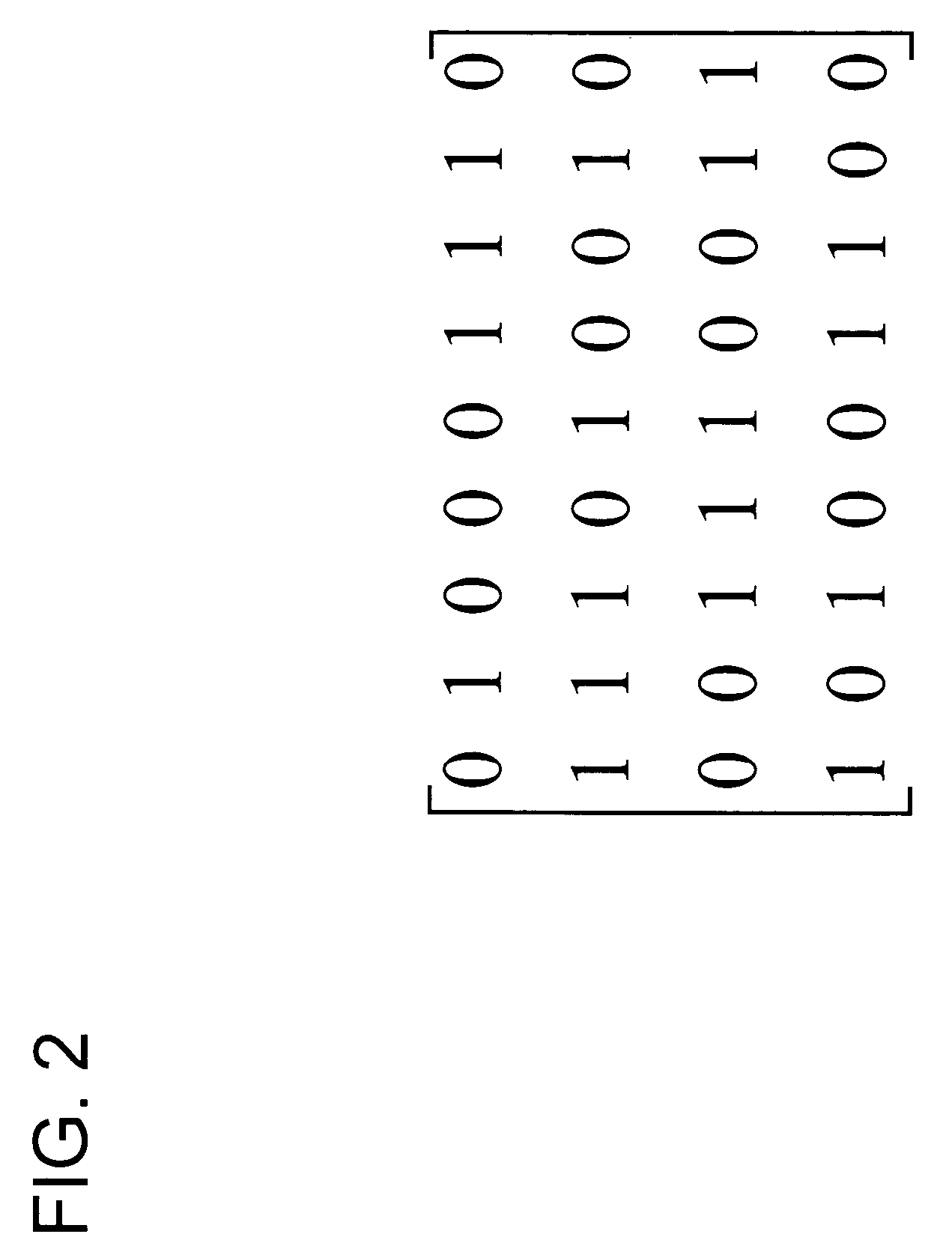Coded pattern for an optical device and a prepared surface
a technology of optical devices and coded patterns, applied in the field of optical devices, can solve the problems of difficult repeated handling of original documents and electronic forms, difficulty in converting handwritten documents into electronic documents, and difficulty in converting scanned images, etc., and achieves the effect of convenient implementation
- Summary
- Abstract
- Description
- Claims
- Application Information
AI Technical Summary
Benefits of technology
Problems solved by technology
Method used
Image
Examples
Embodiment Construction
Exemplary Optical Device
[0024]Embodiments of the present invention relate to an optical device (e.g., an optical imaging sensor or an optical reading device) interacting with a surface to determine encoded information on the surface. In one embodiment of the invention, the optical device may be implemented as a multi-function pen or stylus. Aspects of the present invention also include placing a pattern of symbols in a display form. The pattern of symbols may represent encoded data such as position data, multimedia (e.g., audio, video, image, etc.), security application, biometrics, identify management, other bulk data, or a link to other data. In one embodiment, the display form is a printed paper (or other physical medium) or a display projecting or containing the encoded pattern of symbols in conjunction with another image or set of images. For example, the encoded pattern of symbols may be represented as a physical image on the paper, an image overlying or underlying another dis...
PUM
 Login to View More
Login to View More Abstract
Description
Claims
Application Information
 Login to View More
Login to View More - R&D
- Intellectual Property
- Life Sciences
- Materials
- Tech Scout
- Unparalleled Data Quality
- Higher Quality Content
- 60% Fewer Hallucinations
Browse by: Latest US Patents, China's latest patents, Technical Efficacy Thesaurus, Application Domain, Technology Topic, Popular Technical Reports.
© 2025 PatSnap. All rights reserved.Legal|Privacy policy|Modern Slavery Act Transparency Statement|Sitemap|About US| Contact US: help@patsnap.com



